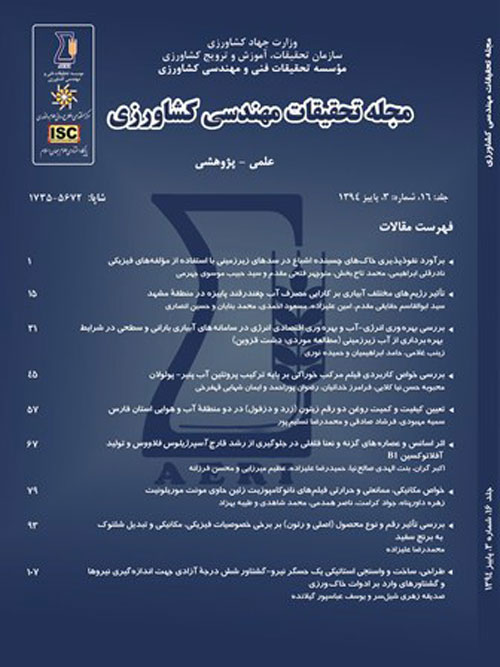Field Evaluation of Subsurface Drainage Design Parameters for a Rain Drainage Network in Behshahr, Iran
Evaluating drainage systems, exploring their strengths and weaknesses, provides a comprehensive perspective to designers and organizers for optimum design and implementation of guidelines for the future. This study was conducted at an experimental site consisting of three plots on a subsurface drainage network under operation in Behshahr, a coastal region in northern Iran. To evaluate system performance,discharge rates from laterals and the depth of water table between laterals were monitored for a period of three months during the autumn. A second degree equation similar to the Hooghoudt formula was developed to show the relation between the hydraulic head and discharge rate. This equation was used to estimate the hydraulic conductivity (K) and equivalent depth (d) of the impermeable layer. The obtained K for the three plots ranged from 1.4 to 2.4 md-1, which was greater than the design value. This analysis also showed that the laterals were placed on the permeable layer. The Glover-Dumm equation was used to show the rate of water table fall and to calculate the specific yield () S y and reaction factor (α). Based on these results, the actual α was 8%, which is greater than the design value of 4%, and the average S y obtained was 5.7%, compared to the design value of 7.7%. From these results, it can be concluded that the lateral spacing was overestimated.


